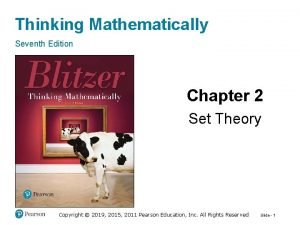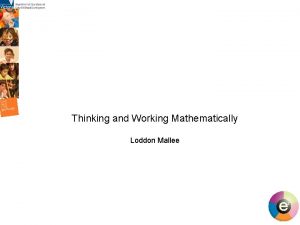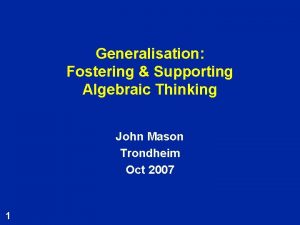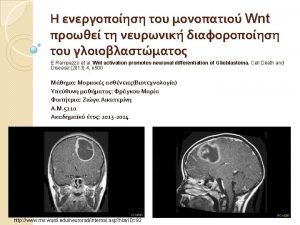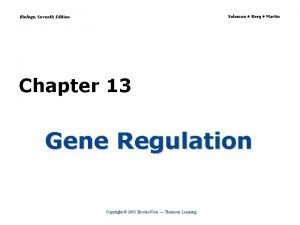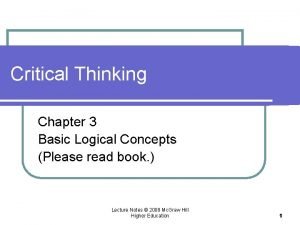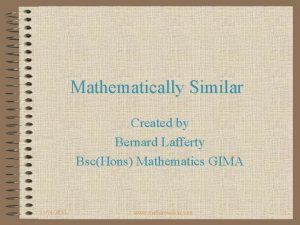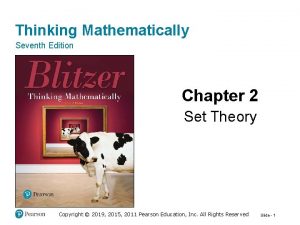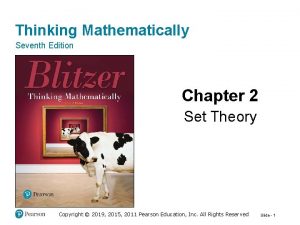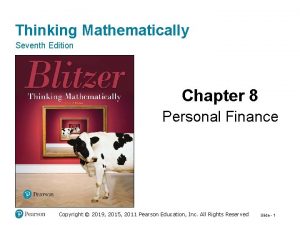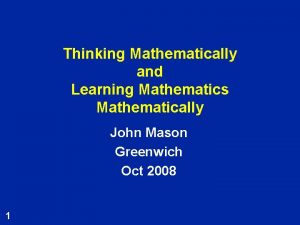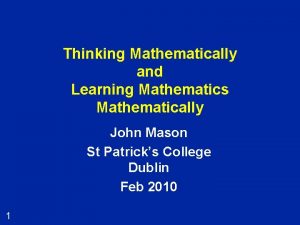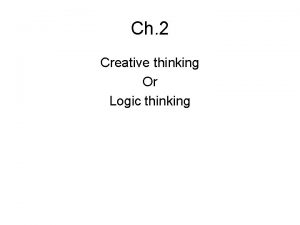Thinking Mathematically Seventh Edition Chapter 3 Logic Copyright











- Slides: 11

Thinking Mathematically Seventh Edition Chapter 3 Logic Copyright © 2019, 2015, 2011 Pearson Education, Inc. All Rights Reserved Slide - 1

Section 3. 3 Truth Tables for Negation, Conjunction, and Disjunction Copyright © 2019, 2015, 2011 Pearson Education, Inc. All Rights Reserved Slide - 2

Objectives 1. Use the definitions of negation, conjunction, and disjunction. 2. Construct truth tables. 3. Determine the truth value of a compound statement for a specific case. Copyright © 2019, 2015, 2011 Pearson Education, Inc. All Rights Reserved Slide - 3

Truth Tables (1 of 3) Negation (not): Opposite truth value from the statement. Negation Copyright © 2019, 2015, 2011 Pearson Education, Inc. All Rights Reserved Slide - 4

Truth Tables (2 of 3) Conjunction (and): Only true when both statements are true. Conjunction Copyright © 2019, 2015, 2011 Pearson Education, Inc. All Rights Reserved Slide - 5

Truth Tables (3 of 3) Disjunction (or): Only false when both statements are false. Disjunction Copyright © 2019, 2015, 2011 Pearson Education, Inc. All Rights Reserved Slide - 6

Example 1: Using the Definitions of Negation, Conjunction, and Disjunction (1 of 2) Let p and q represent the following statements: p: 10 > 4 q: 3 < 5 Determine the truth value for each statement: a. Since both are true, the conjunction is true. b. Since p is true, is false, so the conjunction is false. Copyright © 2019, 2015, 2011 Pearson Education, Inc. All Rights Reserved Slide - 7

Example 1: Using the Definitions of Negation, Conjunction, and Disjunction (2 of 2) Let p and q represent the following statements: p: 10 > 4 q: 3 < 5 Determine the truth value for each statement: c. is false. A disjunction is false only when 10 > 4 is true or both components are false. Only one component is false, this is a true statement d. Since q is true, is false. So, the disjunction is false. Copyright © 2019, 2015, 2011 Pearson Education, Inc. All Rights Reserved Slide - 8

Example 2: Constructing Truth Tables (1 of 2) Construct a truth table for Step 1: First list the simple statements on top and show all the possible truth values. and fill in the truth values. Step 2: Make a column for Copyright © 2019, 2015, 2011 Pearson Education, Inc. All Rights Reserved Slide - 9

Example 2: Constructing Truth Tables (2 of 2) Step 3: Construct one more column for The final column tells us that the statement is false only when both p and q are true. For example: p: Harvard is a college. (true) q: Yale is a college. (true) It is not true that Harvard and Yale are colleges. A compound statement that is always true is called a tautology. Is this a tautology? No Copyright © 2019, 2015, 2011 Pearson Education, Inc. All Rights Reserved Slide - 10

Example 3: Constructing a Truth Table Construct a truth table for Copyright © 2019, 2015, 2011 Pearson Education, Inc. All Rights Reserved Slide - 11
 Thinking mathematically 7th edition
Thinking mathematically 7th edition Thinking and working mathematically
Thinking and working mathematically Copper plate multiplication
Copper plate multiplication Endomysium
Endomysium Database system concepts seventh edition
Database system concepts seventh edition Principles of information systems
Principles of information systems Molecular biology of the cell seventh edition
Molecular biology of the cell seventh edition Biology seventh edition
Biology seventh edition For all pots p there is a lid l such that
For all pots p there is a lid l such that Creative thinking
Creative thinking Common patterns of inductive reasoning
Common patterns of inductive reasoning Bernard lafferty
Bernard lafferty
